Attracting, training, and retaining a skilled and diverse workforce are hallmarks of the federal Judiciary. Critical support systems and innovative human resources practices are vital to the efficient operation and management of the Judiciary.
Work Measurement Formulas
In September 2018, the Judicial Conference approved new or updated staffing formulas for district clerk’s offices and court reporters. The formulas are based on data from more than 6,400 Judiciary personnel. The district clerk's office formula more accurately reflects staffing needs for multi-district litigation and patent cases, and adds one full-time position per court district to bolster Judiciary cybersecurity. Nationally, district clerk's offices would gain 178 full-time equivalent positions, a 2.8 percent increase. The number of full-time court reporters would increase by 50 nationally.
Human Resources Information Security
In the spring of 2018, the Human Resources Management Information System (HRMIS) was required to undergo regular tests of its cybersecurity safeguards like those imposed on the Case Management/Electronic Case Files system (CM/ECF), the Judiciary’s central repository of case documents. Security assessments for HRMIS were scheduled through fiscal year 2025. A self-assessment tool was developed to inform IT security-related decisions and investments in the intervening years between formal assessments.
Diversity Programs
The Judiciary is committed to fair workplaces and a diverse workforce. Since 2010, the Administrative Office of the U.S. Courts (AO) has facilitated local court participation in 100 career fairs and legal recruiting events, resulting in direct contacts with thousands of students. The AO coordinates attendance by judges and court staff at local career fairs, where they can meet one-on-one with diverse pools of potential employees and highlight the advantages of working in the Judiciary.
Another outreach effort is the Summer Judicial Internship Program, which pairs federal judges with outstanding law students from diverse backgrounds. In 2018, 212 students from 30 law schools applied and 43 students were placed with federal judges. The program is a partnership of the Judicial Conference’s Committee on Judicial Resources and an educational foundation called Just the Beginning – A Pipeline Organization.
In 2018, the AO kicked off the Model Intern Diversity Pilot aimed at encouraging students to pursue careers in the Judiciary. The first participant completed an internship in the Middle District of Alabama, and funding was approved for nine additional internships throughout the country over two years. Additionally, under the Director’s Leadership Program at the AO, an initiative to enhance awareness of diversity programs was underway.
Development and Training
The AO hosts a variety of programs throughout the year to help employees develop new skills and enhance their current proficiencies. In partnership with courts and federal defender organizations, the programs offer opportunities for employees to expand into new areas and to work on projects outside their regular responsibilities. In 2018, 129 court and federal defender organization employees participated in temporary duty and extended collaboration assignments; 26 AO employees participated in intensive orientations to court operations in two circuits; and the AO sponsored an in-depth knowledge seminar about the magistrate judges system.
In addition, three court and federal defender staff members were selected for the annual Director’s Leadership Program, a yearlong residency that offers well-qualified court employees the opportunity to work on national projects while gaining a greater understanding of national issues and policies. The Director’s Leadership Program residents for 2018 are:
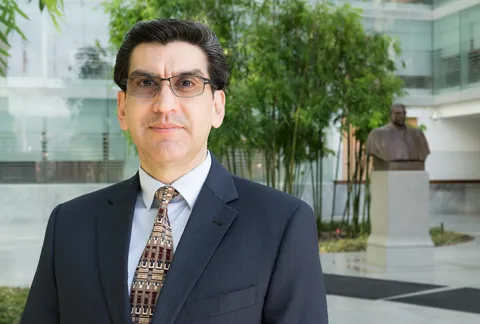
Samuel Rodriguez Jr.
Samuel Rodriguez Jr., facilities assistant, Fourth Circuit Court of Appeals Executive Office, was assigned to the AO’s Energy and Sustainability Program. He served as project lead in developing an energy and sustainability program to assist courts with the identification and implementation of cost-containing energy and resource conservation measures. Rodriguez is also working with AO staff to develop and promote a green office program. Rodriguez has a background in architecture and engineering, and also came to the project with the necessary advocacy and communication skills.
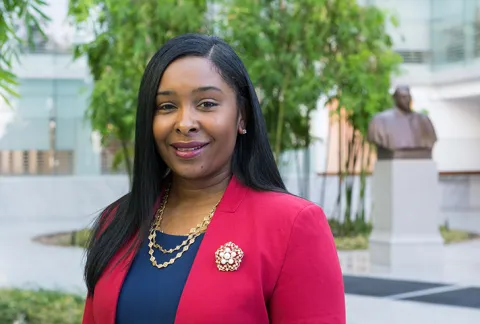
Tiana Sampson
Tiana Sampson, career law clerk to Judge Karen M. Williams, District of New Jersey, joined the Office of the Deputy Director to work on the Judiciary’s racial fairness, implicit bias, and diversity initiatives. Her role was to develop effective ways of sharing information about training and other resources throughout the Judiciary to increase the numbers of employees taking advantage of them. Sampson formerly worked for a firm specializing in employment law. In her job as a career law clerk, she took the lead in diversity outreach and overseeing the legal interns working for the court.

Timothy Watkins
Timothy Watkins, assistant federal public defender, District of Massachusetts, joined the AO’s Defender Services Office (DSO) on a project to examine court practices in managing the challenges of criminal case discovery in the electronic age. Watkins is working to identify federal courts that are effectively addressing these challenges using the Federal Judicial Center’s electronically stored information protocols, local rules, and working groups. He will prepare an analysis of best practices that courts nationwide can implement as electronic discovery becomes ubiquitous. In his 24 years as a trial and appellate defense counsel at both the federal and state levels, Watkins worked on high-visibility criminal cases involving large volumes of electronic discovery. He also has been an instructor in electronic case management and has worked with the DSO’s National Litigation Support Team, which assists attorneys with electronic discovery issues.
2018 Director’s Awards
The Director’s Awards are given by the AO director each year to recognize outstanding performance in the federal courts. They are given for outstanding leadership, innovation and efficiency, and commitment to delivering the best possible service to the public. The recipients are nominated by colleagues based on career achievements and contributions to specific projects that have benefited their home courts and the federal Judiciary as a whole.
In 2018, Judiciary employees from eight courts received Director’s Awards in five areas: Outstanding Leadership, Excellence in Court Operations – Administration, Excellence in Court Operations – Technology, Excellence in Court Operations – Mission Requirements, and the Director’s Award for Extraordinary Actions.
Director’s Award for Outstanding Leadership
This award is given to candidates who lead national endeavors to improve the federal Judiciary; exhibit exemplary stewardship of resources; lead innovations that improve service and use of resources; improve public access to and awareness of the role of the Judiciary; and enhance the image of the federal Judiciary. There were two recipients in 2018:

Elisabeth A. “Betsy” Shumaker, 10th Circuit clerk of court, has led national initiatives in such diverse areas as finances and budgets, information technology, staffing formulas, and data governance. She chairs the Appellate Clerks Advisory Group, and has served on the Budget and Finance Advisory Council, the Space and Facilities Advisory Council, the Appellate Court and Circuit Offices Work Measurement Steering Group, and the NextGen Project Steering Group and Advisory Board, which provides guidance on an update of the Judiciary’s Case Management/Electronic Case Files system. Tenth Circuit Chief Judge Timothy M. Tymkovich credited Shumaker with leading an almost total conversion from paper to electronic dockets, resulting in greater access for litigants, lawyers, and the public.
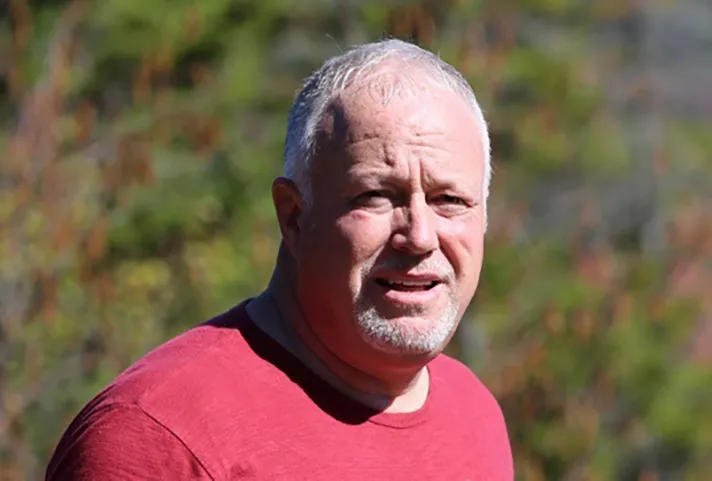
Lawrence K. “Larry” Baerman, who retired in August as clerk of court for the Northern District of New York, was an innovator and cost cutter over his 38-year career. He helped save the Judiciary tens of millions of dollars in rent costs through a billing-validation initiative that eventually was adopted nationally. He also spearheaded development of the Judiciary Electronic Disposal System. It automates and simplifies the process of complying with and documenting property disposal requirements, while broadcasting the availability of items to a larger audience. From 2003 to 2015, Baerman served on the Judicial Conference Committee on Court Administration and Case Management. In that role, he worked on initiatives related to the NextGen update of the Judiciary’s CM/ECF system, records management, courtroom technology, and case management in congested courts.
Director’s Award for Excellence in Court Operations — Administration
The Excellence awards are based on a candidate’s demonstrated history of conducting court operations with economy and efficiency; fostering innovations that improve service locally or throughout the Judiciary; and enhancing the public’s awareness and image of the federal Judiciary.

Back row, left to right: Shane Luck, Vicky Mizell, and Stacy Peters. Front row, left to right: Christina Eckert and Heidi Sultzbaugh.
Five Northern District of Ohio employees were honored for developing QuEST, a web-based tool and training process that dramatically improved the accuracy and consistency of online court records. Recipients were Vicky Mizell, chief deputy clerk of court; Stacy Peters, operations manager; Shane Luck, applications administrator; and Heidi Sultzbaugh and Christina Eckert, data quality analysts.
Most court documents are filed electronically, but data quality review is needed to ensure accurate docket sheets and Judiciary statistical reports. QuEST enables data quality analysts to review random samples of the initial records vetting and then provides detailed reports on errors that are found. In the first quarter of its use, the QuEST system, supported by a new training manual and ongoing coaching, more than doubled the staff’s accuracy in vetting court filings. Today, all staff now meet or exceed the district’s accuracy standard.
Director’s Award for Excellence in Court Operations — Technology

Erik Grubbs, information technology director for the District of Hawaii, automated a system for preparing, reviewing, and approving court documents, greatly speeding the process by which they are approved, docketed, and served. Manual processes that took days to complete now can be done in a matter of hours.
Grubbs’ program, called FormFlow, automatically populates an electronic document template with relevant documents and information from Judiciary and probation office databases, and then gives each person in the sequence an automatic notification. Once each review is complete, a “submit” button moves the document forward with a digital signature and a selected action. A judge can perform numerous functions quickly and electronically, including approving a document (such as a warrant), scheduling a hearing, and enabling the document to be docketed and processed within hours of initiation.
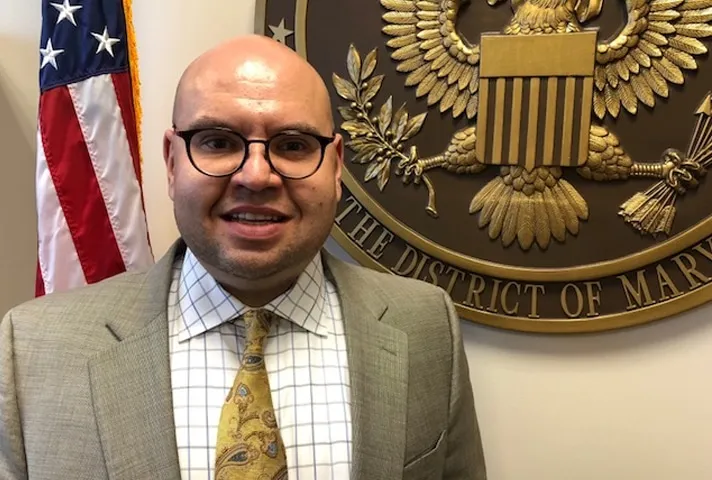
Peter Smolianski, information technology director for the District of Maryland Bankruptcy Court, enhanced automation, improved cybersecurity, and reduced costs by modernizing infrastructure, networks, and systems, as well as deploying upgraded courtroom technology and software solutions.
Recognizing that cybersecurity tools must be backed by vigorous education and employee buy-in, he designed and administered numerous district-wide phishing simulations and cybersecurity awareness exercises. Aided by complementary teaching programs that Smolianski created and led, the district’s cybersecurity posture has improved significantly. He also implemented an integrated collaboration and enterprise content management system for the district that provides significant efficiencies, economies of scale, and cost savings.
Director’s Award for Excellence in Court Operations — Mission Requirements

From left to right: Kenneth P. Sheain and Jarrett B. Perlow.
Kenneth P. Sheain and Jarrett B. Perlow, of the Court of Appeals for the Federal Circuit, introduced new practices in their first 18 months on the job to increase operational efficiency and quality of service to the court and to the public, while implementing cost containment practices designed to refocus the clerk’s office on its mission-essential requirements.
With a goal of creating a stakeholder-centered operation, Chief Deputy Clerk Perlow organized a realignment of staff functions and core responsibilities within the office, which resulted in new function-based teams and more evenly distributed workloads. Sheain, the data quality and program manager, developed a series of training and data-driven initiatives designed to rapidly improve the quality of service from the clerk’s office.
Specific successes included implementing a modular case manager training program that reduced training time and costs; creating a quality assurance process that improved the accuracy of case data in CM/ECF and established a training feedback loop to improve staff performance; developing a new staff intranet portal to house newly created training and procedural materials; and expanding stakeholder outreach programs and creating stakeholder-specific communication channels to reduce response time and to improve the quality of service delivered to judges’ chambers, the bar, and litigants.
Director’s Award for Extraordinary Actions
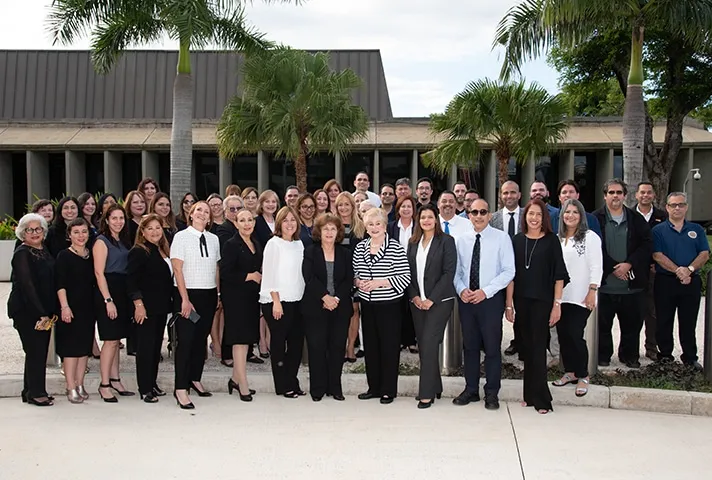
The staff of the Office of the Clerk of the District Court for Puerto Rico and the IT manager of the Bankruptcy Court were honored for their response to the human crises created by Hurricanes Irma and Maria, and their ensuing ability to provide uninterrupted operational support for judicial proceedings related to the island government’s massive financial default. More than 80 district court employees, led by Clerk of Court Frances Ríos de Morán, were recognized for their resilience, bravery, resourcefulness, and commitment to the court’s mission.
The staff created new protocols to manage the unique legal proceedings under the Puerto Rico Oversight, Management, and Economic Stability Act (PROMESA), a district court case in which more than 100,000 claims have been filed and which requires concerted coordination within the district and with other district courts.
The district and bankruptcy courts’ challenges became more daunting when Hurricane Maria struck Puerto Rico as it was still coping with the aftermath of Hurricane Irma. The electrical grid was destroyed, nearly all internet and cell phone communications were cut off, and the island suffered widespread flooding.
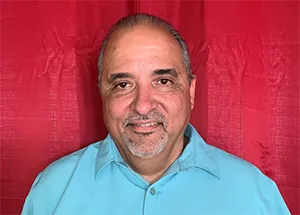
Félix Martínez
Despite the devastation, the district court renewed limited court operations within three days. The Human Resources Department promptly activated emergency communications, and screened and identified personnel needs. The IT staff kept computer and communications systems operational despite daily power interruptions and other technical challenges, while also providing service to the Probation Office. IT Manager Félix Martínez was recognized for responding quickly in multiple emergency situations, once driving through hazardous conditions to establish contact with a second bankruptcy court in Ponce, providing workers with satellite phones so that they could communicate with the main court in San Juan.
Case docketing activity did not slow down during the disasters. While many lawyers were on the mainland, the clerk’s office employees used their personal generators to help sustain docketing operations, allowing them to react to filings in the aftermath of the storms. Staff in the Finance Department also faced challenges when the court authorized panel attorneys to file interim vouchers in order to receive payments. This caused an avalanche of vouchers to be filed. The staff in the Operations Department set up a plan to set and track hearings, coordinate videoconferences, and monitor the status of 1,500 pretrial detainees transferred to Mississippi, Georgia, Florida, and Alabama.
Court staff responded to community needs by coordinating a blood donation drive within the court, law enforcement, and legal communities. With the Federal Bar Association, the court also coordinated assistance to those who needed to file claims with the Federal Emergency Management Agency (FEMA). The court also allowed jury rooms to be used as classrooms by the University of Puerto Rico School of Law, enabling students to resume the academic semester while the institution was without power.
All of this was accomplished while many of the staff members were dealing with personal and family crises; a lack of food, potable water, and fuel; and structural damage to their homes. At “a time when the entire island was in complete crisis, this team kept the mission of the Judiciary vibrant and moved it forward,” the nominating letter said.
Annual Report 2018
- Annual Report 2018
- Funding/Budget
- The Courts and Congress
- The Federal Bench
- Accountability and Resource Management
- Facilities and Security
- Public Outreach
- Court Operations and Case Management
- Defender Services
- Probation and Pretrial Services
- Human Resources
- Information Systems and Cybersecurity
- Recent and Proposed Amendments to Federal Rules
- In Profile
